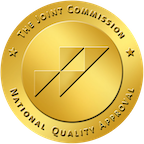Skip To Rehab Listing
That is one of the reasons the San Luis Obispo area has 27 drug and alcohol rehab centers accessible to local residents who struggle with addiction. These programs serve the area's population of 59,006 regardless of age or circumstances in order to make effective rehab accessible to anyone who is looking for it.
Alcohol and Drug Treatment Program Settings and Methods
San Luis Obispo area residents who face drug and alcohol addiction problems can choose from a variety of recovery settings based upon factors such as their location and individual needs.
Recovery settings can include the following: inpatient drug abuse treatment, inpatient detoxification centers, short term drug and alcohol rehabs, long term drug rehab centers, outpatient hospital programs.
Clients can also pick from a number of recovery methods designed to deliver effective services for their needs: trauma-related counseling, trauma therapy, brief intervention approach, dual diagnosis drug rehab, motivational interviewing, relapse prevention.
Special Programs for Addiction Treatment
Alcohol and drug addiction is not the same for everyone, so treatment must be varied. That is why substance abuse treatment centers in the San Luis Obispo area offer a number of special services designed to deliver a tailored approach to treatment for clients. These programs include the following: persons with post-traumatic stress disorder, child care for clients children, active duty military, substance abuse education, programs for the hearing impaired, residential beds for client's children.
Recovery Payment Options
Patients sometimes avoid recovery because of worries about finances. However, addiction treatment centers make a variety of financing alternatives available to clients in order to help with their economic needs and improve opportunities for treatment. Some of these options are included here: private health insurance, private pay, military insurance, medicaid, medicare, access to recovery (atr) voucher, state education funds.
Alcohol and drug addiction rehabilitation is available for San Luis Obispo residents via many different programs, methods, and financing options that put sustained sobriety within reach.
Commonly Asked Questions about Addiction and Treatment
What are the signs of liver damage from alcoholism?
Alcoholism, or Alcohol Use Disorder (AUD), can lead to liver damage over time as the liver struggles to process excessive amounts of alcohol. Liver damage due to alcoholism can manifest in various ways, with signs ranging from mild to severe. Some common signs of liver damage from alcoholism include:
- Jaundice: One of the most recognizable signs of liver damage is the yellowing of the skin and eyes, known as jaundice. This occurs when the liver is unable to properly process bilirubin, a waste product that accumulates in the body.
- Abdominal pain: Individuals with liver damage may experience pain or discomfort in the upper right abdomen, where the liver is located.
- Swelling in the abdomen: Liver damage can lead to the accumulation of fluid in the abdominal cavity, a condition known as ascites. This can cause swelling and discomfort in the abdomen.
- Fatigue: Impaired liver function can result in persistent fatigue, weakness, and a general lack of energy.
- Dark urine: Liver damage can cause the urine to become darker in color, often appearing brown or tea-colored.
- Pale or bloody stools: Individuals with liver damage may notice pale, clay-colored, or bloody stools, indicating that the liver is struggling to process waste products.
- Bruising or bleeding easily: The liver plays a crucial role in blood clotting. When the liver is damaged, it may struggle to produce adequate clotting factors, resulting in easy bruising or prolonged bleeding from minor cuts or injuries.
- Loss of appetite: Liver damage can lead to a decreased appetite or unexplained weight loss.
- Nausea and vomiting: Impaired liver function can cause feelings of nausea or even vomiting.
- Itchy skin: Liver damage can result in the buildup of bile salts in the skin, leading to itchiness and irritation.
- Spider angiomas: Some individuals with liver damage may develop small, spider-like blood vessels visible beneath the skin, known as spider angiomas.
- Confusion or disorientation: In advanced cases of liver damage, toxins that would normally be filtered by the liver can build up in the bloodstream and affect brain function, leading to confusion, disorientation, or even coma.
It is important to seek medical attention if you or someone you know is experiencing signs of liver damage from alcoholism. Early diagnosis and intervention can help prevent further damage and improve the chances of recovery. Treatment may include abstaining from alcohol, making lifestyle changes, and addressing any underlying health conditions contributing to liver damage.
How do I stop enabling an addict?
"Helping someone stop enabling an addict can be a challenging process, as the enabler often has deeply ingrained habits and patterns that need to be addressed. Here are some steps to consider:
Recognize Enabling Behavior: First, you need to identify the behaviors that are enabling the addiction. Enabling behaviors can include things like providing money that funds the addiction, covering for the addict's mistakes or responsibilities, or continually forgiving harmful behavior without setting boundaries.
Educate Yourself: Learn about addiction and its dynamics. Understanding that addiction is a disease and not merely a matter of willpower can help change your perspective and reactions.
Set Boundaries: Establish and communicate clear, firm boundaries regarding what you will and won't accept. Stick to these boundaries even if it's difficult.
Stop Rescuing: Refrain from protecting the person from the consequences of their addictive behavior. It is important for them to experience the full impact of their actions.
Encourage Treatment: Instead of protecting the person from their addiction, encourage them to seek professional help. Offer to assist in finding treatment options or attending support groups.
Seek Support: Enabling patterns can be tough to break. Seek help from therapy, counseling, or support groups like Al-Anon. These resources can provide you with tools and strategies to stop enabling.
Practice Self-Care: Ensure you're taking care of your own physical and emotional health. It's easy to get so wrapped up in the addicted person's problems that you neglect your own needs.
Maintain Consistency: It's essential to be consistent with your new approach. If you occasionally slip back into enabling behaviors, the person with the addiction may continue to expect it.
Be Patient: Changing long-standing patterns of behavior takes time, both for you and the person with the addiction. Remember to be patient with yourself and with them.
Remember, You're Not to Blame: Addiction is a complex disease influenced by many factors. It's important to remember that you're not responsible for the other person's addiction or recovery. Your role is to support in healthy ways, not to cure the addiction.
What drugs turn off emotions and make you feel numb?
Several classes of drugs can have the effect of numbing emotions or creating a feeling of emotional detachment. It's important to note that these effects can vary widely between individuals and depend on many factors, including the dosage, the method of use, and the individual's personal physiology and psychology. Here are a few examples:
Depressants: This category of drugs, which includes alcohol, benzodiazepines (like Xanax or Valium), and opioids (like heroin or prescription painkillers), can reduce brain activity and dull emotions. Users often report feeling numb or detached from their emotions.
Dissociatives: Dissociative drugs like ketamine, PCP, and certain kinds of cough medicines containing dextromethorphan (DXM), can induce a state of detachment from reality and one's self, which can include a sense of emotional numbness.
Selective Serotonin Reuptake Inhibitors (SSRIs): While primarily used as antidepressants, some individuals report feeling emotionally numb or detached when taking SSRIs. This is generally considered a side effect, and if experienced, should be discussed with a healthcare provider.
Antipsychotics: These medications are primarily used to treat conditions like schizophrenia, but they can also induce a state of emotional numbness or flatness in some individuals.
While these substances can make a person feel emotionally numb, it's important to note that this is often a temporary and potentially harmful solution. Long-term use can lead to a range of negative health effects, including physical dependence, addiction, and a worsening of emotional or mental health symptoms. If you're feeling overwhelmed by your emotions, it's crucial to seek help from a mental health professional rather than turning to substances. They can provide support and discuss healthier ways to cope with these feelings.













